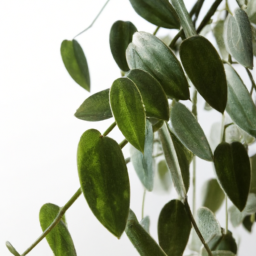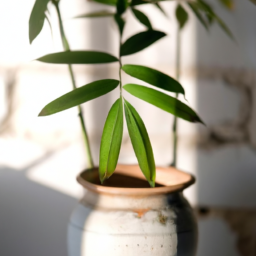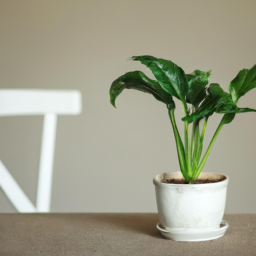
Hey there plant lovers! Are you looking to bring some greenery and life into your home? Well, you’re in luck because today we’re diving into the wonderful world of indoor plants kinds. Whether you’re a seasoned plant parent or just starting your journey, this blog post will guide you through the different types of indoor plants that are perfect for adding a touch of nature to your indoor spaces. From leafy greens to flowering beauties, we’ve got you covered with all the information you need to choose the perfect indoor plants for your home. So, grab a cup of tea, sit back, and let’s explore the fascinating world of indoor plants together!
Different Types of Indoor Plants: Explore a variety of indoor plants, from low-maintenance succulents to air-purifying ferns.
Introduction
Welcome to the world of indoor plants! Whether you are a seasoned plant enthusiast or just starting your green journey, there is a wide range of indoor plants to choose from. Indoor plants not only add beauty and freshness to your living space but also offer numerous health benefits. In this guide, we will explore different types of indoor plants, ranging from low-maintenance succulents to air-purifying ferns.
Succulents
Succulents are a popular choice among indoor plant lovers due to their unique appearance and low maintenance requirements. These plants have thick, fleshy leaves that store water, allowing them to survive in arid conditions. Succulents come in various shapes, sizes, and colors, making them a versatile choice for any indoor setting.
One of the most well-known succulents is the Aloe Vera plant. Not only does it add a touch of green to your space, but it also has medicinal properties. Aloe Vera gel is renowned for its soothing and healing effects on the skin.
Another popular succulent is the Echeveria, with its rosette-shaped leaves and vibrant hues. Echeverias are easy to care for and can thrive in bright, indirect light. They make excellent additions to succulent arrangements or standalone planters.
Ferns
If you are looking to bring a touch of lush greenery into your home, ferns are an excellent choice. Ferns are known for their feathery foliage and ability to purify the air, making them perfect for creating a fresh and healthy indoor environment.
The Boston Fern is a classic choice for indoor gardening. It thrives in high humidity and indirect light, making it ideal for bathrooms or kitchens. Its gracefully arching fronds add an elegant touch to any space.
Another popular fern variety is the Maidenhair Fern. With its delicate, fan-shaped fronds, this plant adds a touch of elegance to any room. Maidenhair ferns require consistent moisture and indirect light, making them perfect for bathrooms or near windows with filtered sunlight.
Orchids
Orchids are known for their stunning flowers and are often considered a symbol of luxury and beauty. While they may require a bit more care compared to other indoor plants, the reward is well worth it when they bloom in all their glory.
Phalaenopsis orchids, also known as moth orchids, are a popular choice for indoor cultivation. They come in a variety of colors and can bloom for several months. Phalaenopsis orchids prefer bright, indirect light and a well-draining potting mix.
Cymbidium orchids are another popular choice, especially for those who prefer larger blooms. These orchids require cooler temperatures and indirect light to thrive. With proper care, they can produce stunning flower spikes that can last for weeks.
Conclusion
Indoor plants bring life and vibrancy to any indoor space. From the low-maintenance succulents to the air-purifying ferns and the elegant orchids, there is a wide variety of indoor plants to suit every taste and preference. Remember to consider factors such as light, humidity, and care requirements when selecting indoor plants for your home or office. So go ahead, explore the world of indoor plants and create a green oasis within your living space!

Best Indoor Plants for Beginners
Are you new to plant parenting and looking for easy-to-care-for indoor plants? Well, you’re in luck! In this guide, we will introduce you to some of the best indoor plants that are perfect for beginners. These plants are not only beautiful but also require minimal maintenance, making them ideal for those who are just starting their indoor gardening journey.
1. Snake Plant
The Snake Plant, also known as Sansevieria or Mother-in-Law’s Tongue, is a popular choice among beginners. This plant has long, sword-shaped leaves that are green with yellow or white variegation. Snake plants are incredibly resilient and can tolerate a wide range of light conditions, making them perfect for any room in your home.
They are also known for their air-purifying qualities, as they can remove toxins like formaldehyde and benzene from the air. Snake plants require minimal watering, and they can survive even if you forget to water them for a while. Just make sure not to overwater them, as they are prone to root rot.
To care for a Snake Plant, place it in bright indirect light and water it when the soil is completely dry. You can easily propagate Snake Plants by dividing the rhizomes and repotting them in fresh soil.
2. Pothos
Pothos, also known as Devil’s Ivy, is another excellent choice for beginners. This trailing vine plant has heart-shaped leaves that come in various shades of green, yellow, or variegated combinations. Pothos is known for its ability to thrive in low light conditions, making it perfect for rooms with limited sunlight.
One of the best things about Pothos is its ability to purify the air by removing toxins like formaldehyde, benzene, and xylene. This plant is also incredibly easy to care for and can tolerate irregular watering. It is recommended to let the soil dry out between waterings to prevent overwatering.
To care for a Pothos plant, place it in bright indirect light or low light areas, and water it when the top inch of soil feels dry. You can easily propagate Pothos by rooting stem cuttings in water or directly in soil.
3. ZZ Plant
The ZZ Plant, scientifically known as Zamioculcas zamiifolia, is a visually striking plant with glossy, dark green leaves. This plant is native to Eastern Africa and can adapt well to various light conditions, including low light. It is an excellent choice for beginners as it can tolerate neglect and does well in dry indoor environments.
The ZZ Plant is also known for its air-purifying qualities and can remove toxins like xylene and toluene from the air. It requires minimal watering and can survive long periods without water. Overwatering can lead to root rot, so it’s important to let the soil dry out between waterings.
To care for a ZZ Plant, place it in bright indirect light or low light areas, and water it only when the top inch of soil feels dry. This plant is slow-growing and doesn’t require frequent repotting.
These are just a few examples of the best indoor plants for beginners. Each of these plants is not only visually appealing but also easy to care for, making them perfect for those who are new to plant parenting. Remember to observe your plants closely and adjust their care based on their specific needs. With a little love and attention, your indoor plants will thrive and bring a touch of nature to your living space!

Indoor Plants for Specific Environments
Indoor plants not only add beauty and aesthetic appeal to our homes but also provide numerous health benefits. However, not all indoor plants are suitable for every environment. Some plants thrive in low-light conditions, while others prefer humid environments or dry climates. In this guide, we will explore different types of indoor plants that are well-suited for specific environments. Whether you have a dimly lit room, a humid bathroom, or a dry living space, there’s a perfect indoor plant for you.
Indoor Plants for Low-Light Conditions
Low-light conditions can pose a challenge for many indoor plants as they require sufficient sunlight to carry out photosynthesis. However, some plants have adapted to thrive in low-light environments, making them ideal choices for rooms with limited natural light. Here are a few indoor plants that can flourish in low-light conditions:
1. Snake Plant (Sansevieria trifasciata)
The Snake Plant, also known as Mother-in-Law’s Tongue, is a popular choice for low-light environments. It has long, upright leaves that are variegated with shades of green, yellow, or white. Snake plants are incredibly resilient and can tolerate neglect, making them perfect for beginners or those who tend to forget about watering their plants. They also purify the air by removing toxins such as formaldehyde and benzene.
2. ZZ Plant (Zamioculcas zamiifolia)
The ZZ Plant is another excellent option for low-light conditions. It has glossy, dark green leaves that grow in an upright manner. ZZ plants are known for their ability to survive in almost any lighting condition, including low light. They are drought-tolerant and can go for long periods without water, making them low-maintenance plants. Additionally, ZZ plants are highly resistant to pests and diseases.
3. Pothos (Epipremnum aureum)
Pothos, also called Devil’s Ivy, is a popular trailing plant that thrives in low-light environments. It has heart-shaped leaves that come in various shades of green, yellow, or white. Pothos is known for its ability to purify the air by removing common indoor pollutants. It is an easy-to-grow plant that can be propagated easily by stem cuttings, allowing you to expand your collection effortlessly.
Indoor Plants for Humid Environments
If you have a bathroom or a kitchen with high humidity levels, you can take advantage of this environment by choosing indoor plants that thrive in such conditions. These plants not only add a touch of greenery to your space but also thrive in the moist air. Here are a few indoor plants that love humidity:
1. Boston Fern (Nephrolepis exaltata)
The Boston Fern is a popular choice for humid environments due to its love for moisture. It has delicate, feathery fronds that create an elegant and lush appearance. Boston Ferns require high humidity levels to thrive, making them perfect for bathrooms or kitchens with regular steam. They also help in purifying the air by removing pollutants like formaldehyde and xylene.
2. Peace Lily (Spathiphyllum wallisii)
The Peace Lily is a beautiful flowering plant that thrives in humid conditions. It has dark green leaves and elegant white flowers that add a touch of elegance to any space. Peace Lilies prefer moist soil and high humidity levels, making them an excellent choice for bathrooms or kitchens. They are also known for their air-purifying properties, removing toxins like benzene and formaldehyde from the air.
3. Orchids (Orchidaceae family)
Orchids are renowned for their beauty and exotic appeal. They thrive in humid environments, making them perfect for bathrooms or any space with high humidity levels. Orchids come in a wide variety of colors and patterns, adding a touch of elegance and sophistication to your indoor garden. While they require specific care and attention, the stunning blooms they produce are well worth the effort.
Indoor Plants for Dry Climates
If you live in a dry climate or have a room with low humidity levels, choosing indoor plants that can tolerate such conditions is crucial. These plants are adapted to conserving water and can survive in drier environments. Here are a few indoor plants that are well-suited for dry climates:
1. Aloe Vera (Aloe barbadensis)
Aloe Vera is a popular succulent known for its medicinal properties and ability to thrive in dry conditions. It has thick, fleshy leaves that store water, allowing the plant to withstand drought. Aloe Vera requires bright, indirect sunlight and well-draining soil. It is also a natural air purifier, removing harmful pollutants from the air.
2. Ponytail Palm (Beaucarnea recurvata)
The Ponytail Palm is a unique and visually appealing plant that can tolerate dry conditions. It has a distinctive swollen trunk and long, curly leaves that resemble a ponytail. Ponytail Palms are drought-tolerant and can go for extended periods without water. They prefer bright, indirect light and well-draining soil.
3. Desert Rose (Adenium obesum)
The Desert Rose is a stunning flowering succulent that thrives in dry climates. It has thick, swollen stems and beautiful, trumpet-shaped flowers in various colors. Desert Roses require bright sunlight and well-draining soil. They are excellent choices for arid regions or rooms with low humidity levels.
By selecting indoor plants that are well-suited for specific environments, you can create a thriving indoor garden that adds beauty to your space while improving air quality. Remember to consider factors such as lighting conditions, humidity levels, and climate when choosing the perfect plants for your home. Happy gardening!
Key Takeaways
Indoor plants are a fantastic way to add life and vibrancy to any space, whether it’s a small apartment or a spacious office. But with so many different kinds of indoor plants to choose from, it can be overwhelming to know where to start. That’s why we’re here to help! In this blog post, we’ll explore some of the most popular and easy-to-care-for indoor plant varieties, so you can find the perfect green companion for your home or workspace.
One of the most popular indoor plant kinds is the pothos. This versatile plant is known for its trailing vines and heart-shaped leaves. It’s incredibly low-maintenance and can thrive in a wide range of lighting conditions. Another great option is the snake plant, also known as mother-in-law’s tongue. With its tall, upright leaves, it adds a touch of elegance to any room. Plus, it’s a champion at purifying the air, making it an excellent choice for those with allergies or asthma. And let’s not forget about the peace lily, a beautiful plant with glossy green leaves and delicate white flowers. It not only adds a pop of color to your space but also helps to remove toxins from the air. These are just a few examples of the many indoor plant kinds available, each with its own unique beauty and benefits. So why not bring a little piece of nature indoors and enjoy the many advantages of having indoor plants?
FAQ Roundup:
Q1: What are some popular kinds of indoor plants?
A1: There are numerous popular kinds of indoor plants to choose from. Some of the most common ones include:
- Snake Plant
- Spider Plant
- Pothos
- ZZ Plant
- Peace Lily
- Rubber Tree
- Dracaena
Q2: Which indoor plants are suitable for low-light conditions?
A2: If you have limited natural light in your space, fret not! Some indoor plants that thrive in low-light conditions are:
- Snake Plant
- Pothos
- ZZ Plant
- Peace Lily
- Dracaena
Q3: What are some indoor plants that are easy to care for?
A3: If you’re new to indoor gardening or simply prefer low-maintenance plants, consider these easy-to-care-for options:
- Snake Plant
- Spider Plant
- Pothos
- ZZ Plant
- Peace Lily
- Succulents
Q4: Can indoor plants improve air quality?
A4: Absolutely! Indoor plants not only add beauty to your space but also help purify the air. They absorb carbon dioxide and release oxygen while filtering out harmful toxins. Some excellent air-purifying plants include:
- Snake Plant
- Spider Plant
- Peace Lily
- Dracaena
- English Ivy
- Bamboo Palm
Q5: How often should indoor plants be watered?
A5: The watering frequency for indoor plants varies depending on the type of plant, environmental conditions, and potting medium. As a general guideline, it’s best to allow the top inch or two of the soil to dry out before watering again. Overwatering can lead to root rot, while underwatering can cause the plant to wilt. It’s important to observe each plant’s specific needs and adjust watering accordingly.
Dr. Olivia Green is a botanist with over two decades of experience in indoor plant cultivation. She holds a Ph.D. in Plant Biology and has dedicated her career to researching plant behavior in controlled environments. Dr. Green is passionate about helping plant enthusiasts master the art of indoor gardening through her extensive knowledge and practical insights.


